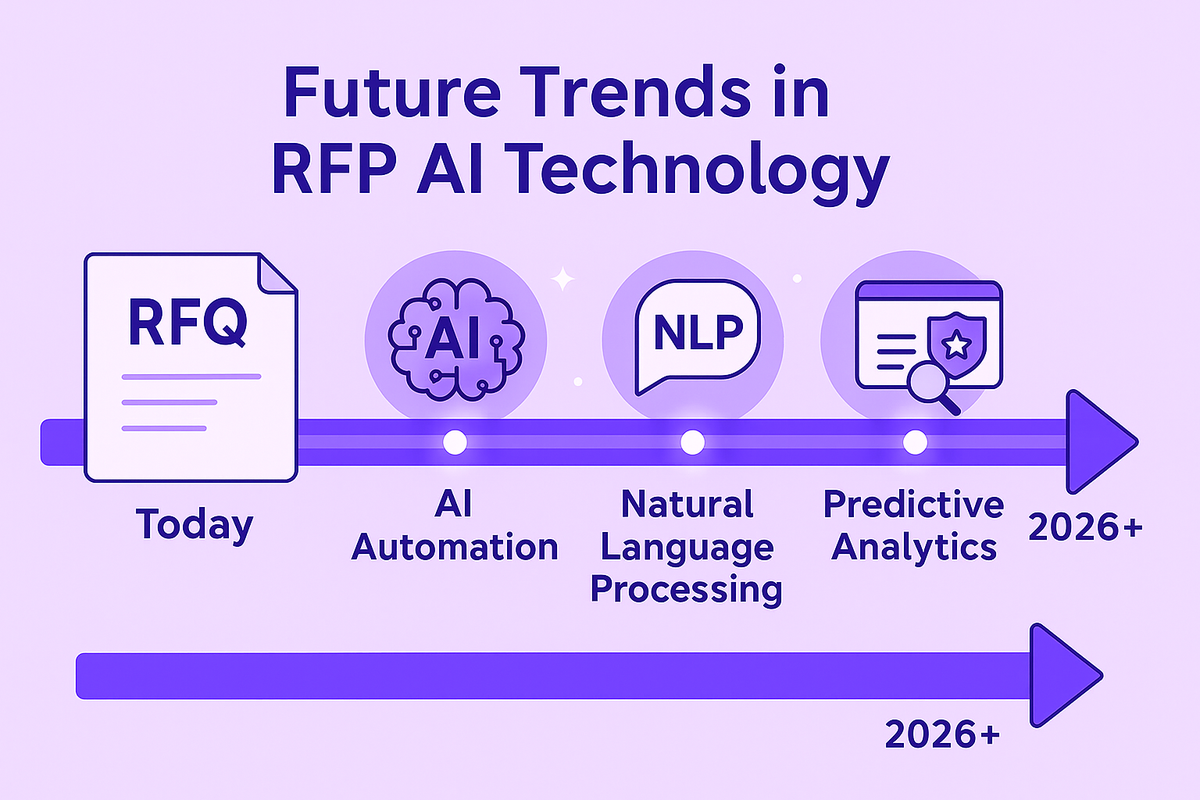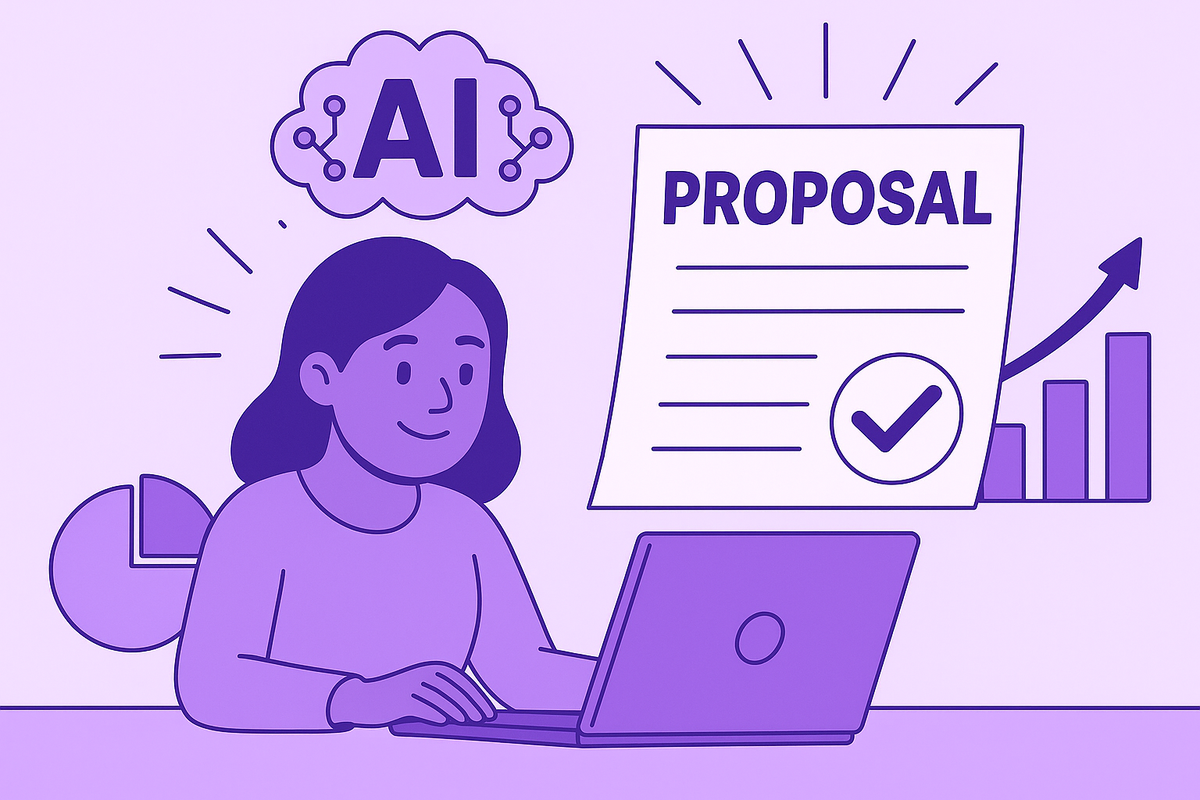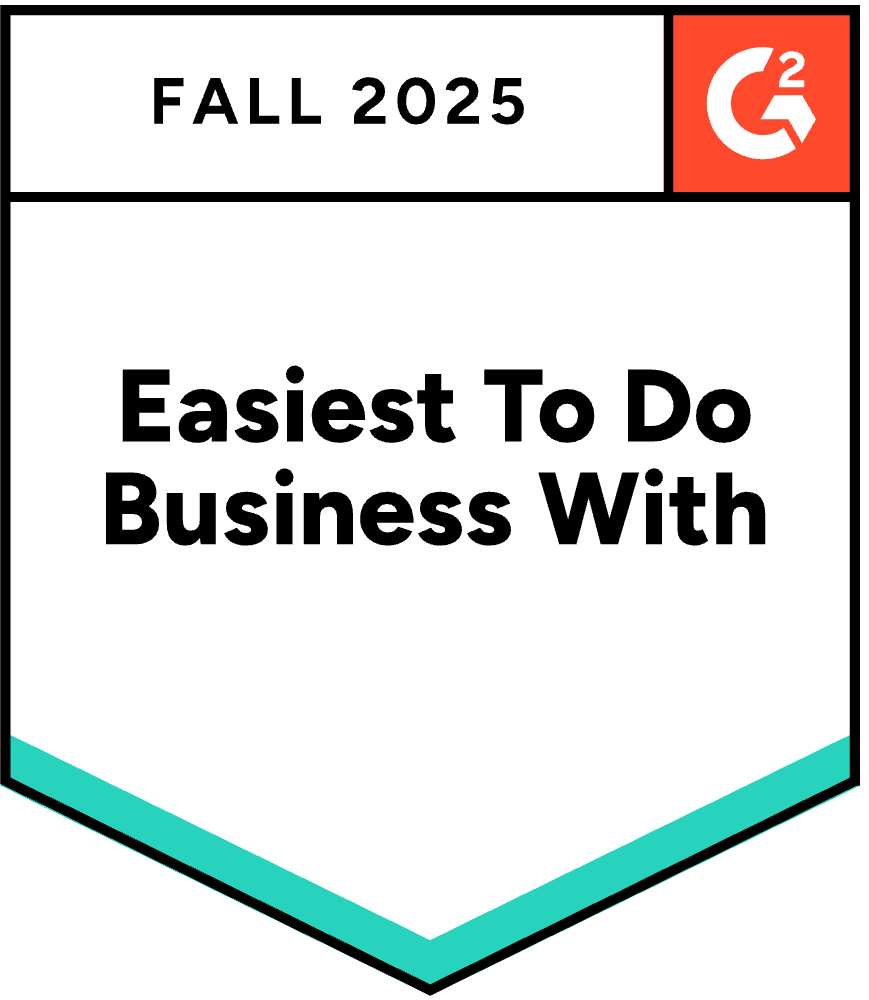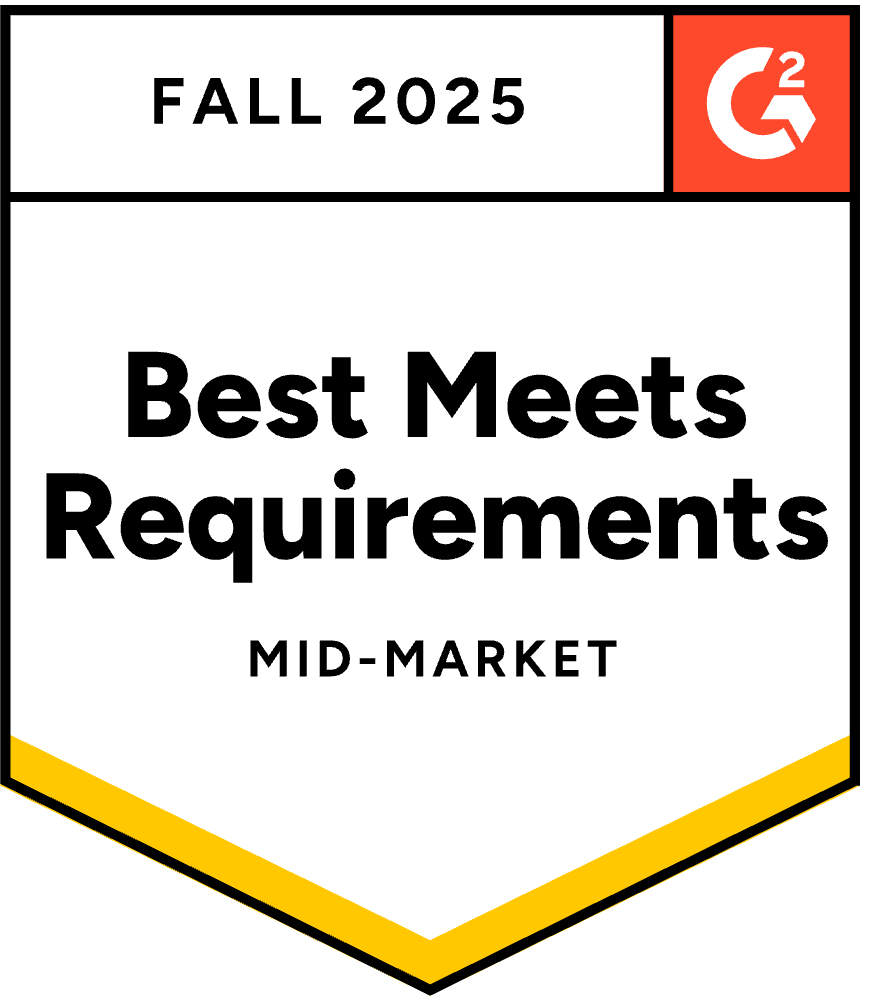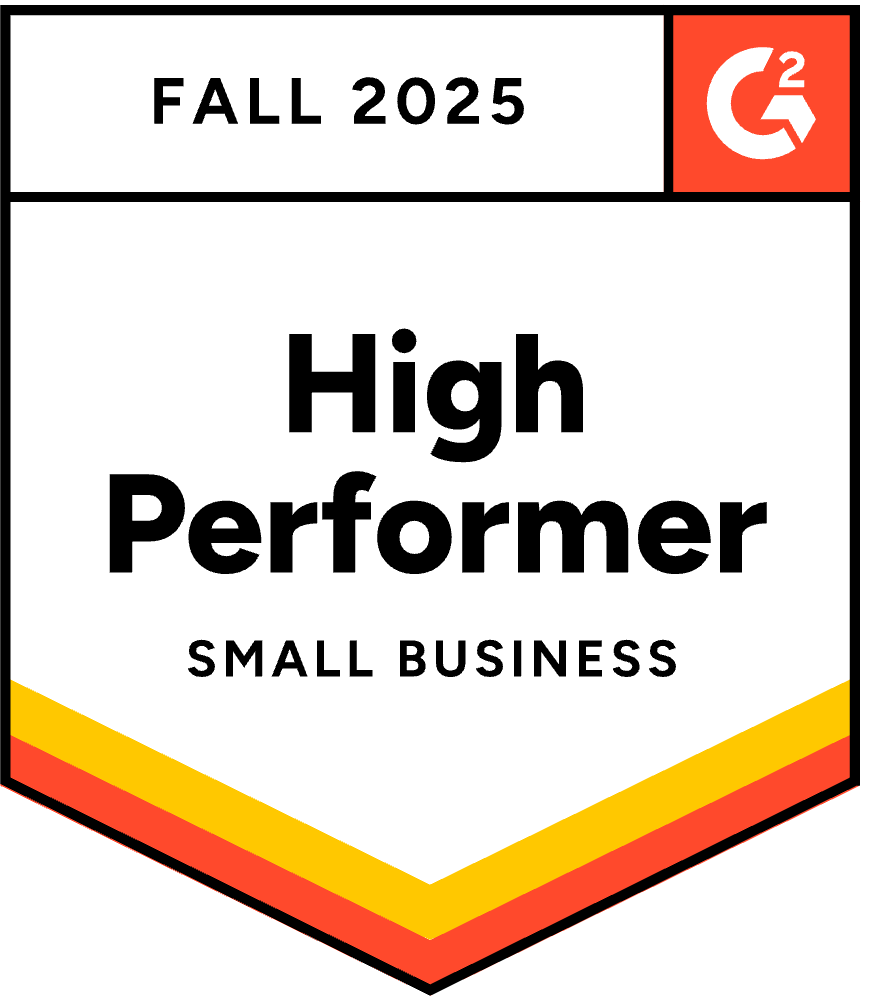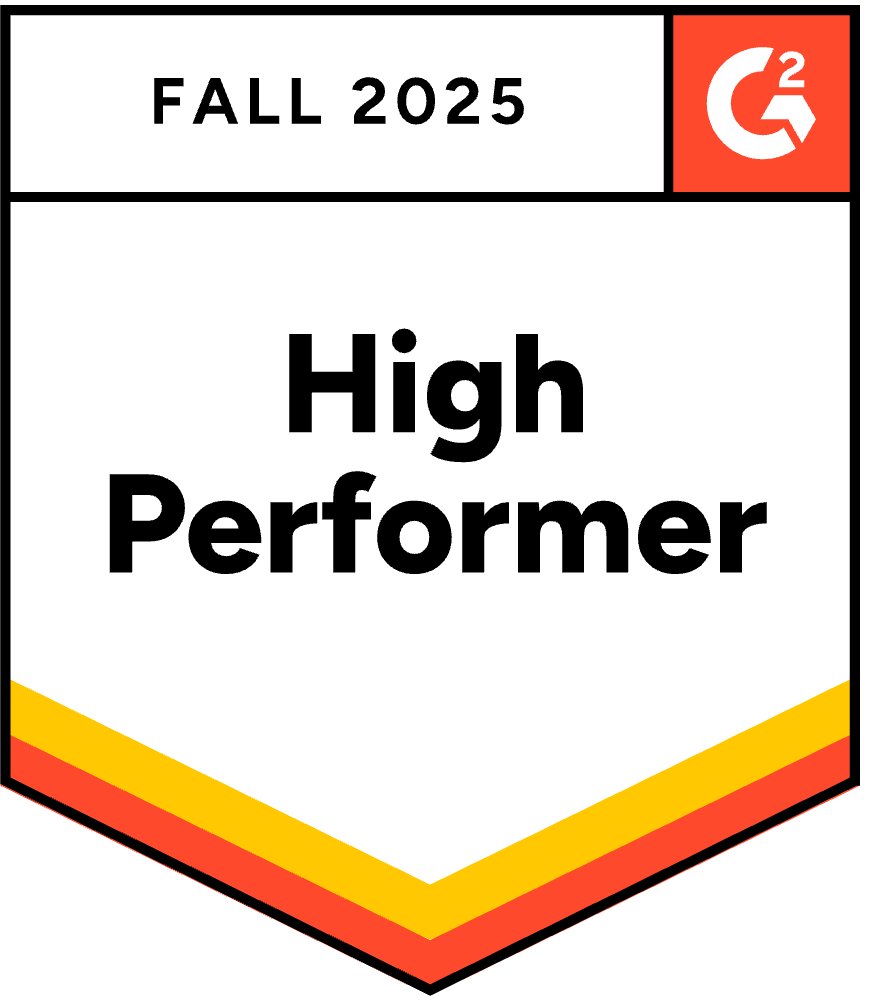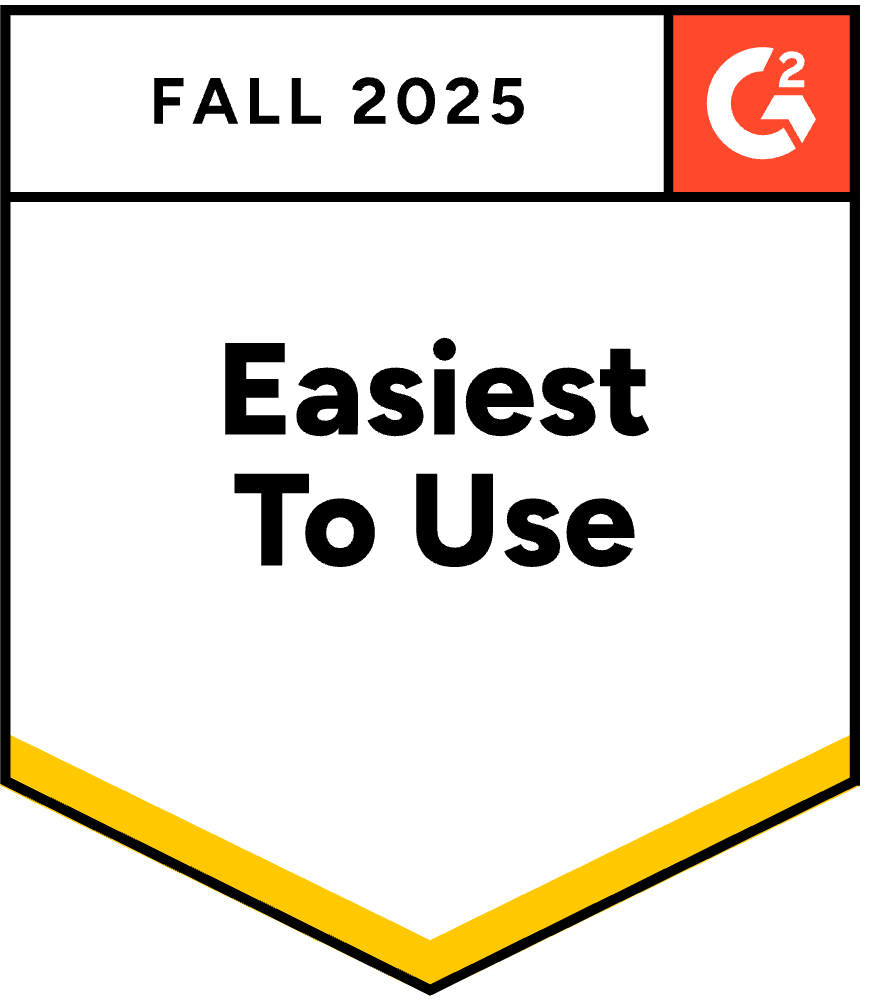The 5 Best RFP Scoring and Analysis Software Tools
October 24, 2025
By
Evie Secilmis
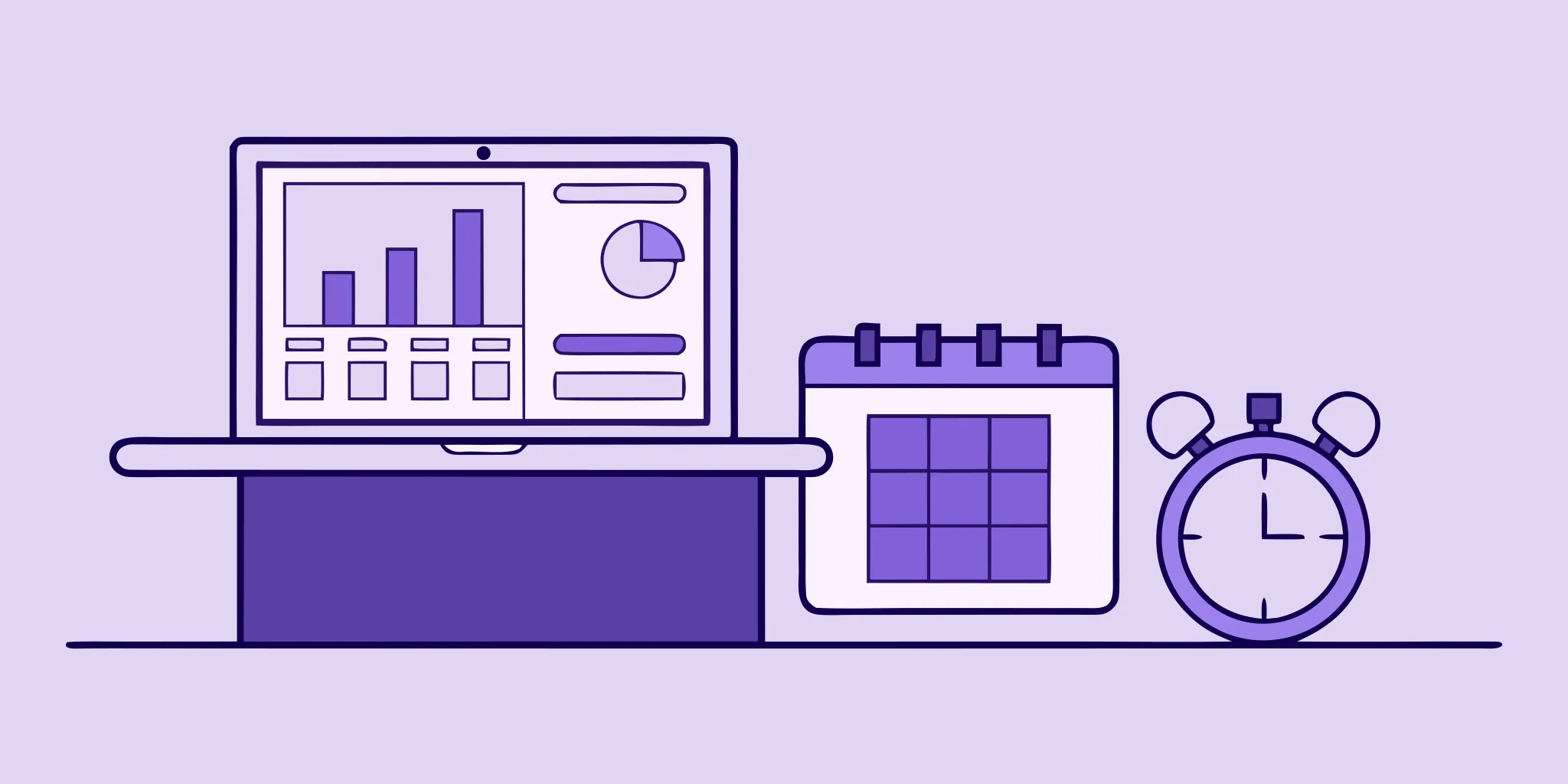
Your sales team is built to sell, not to spend countless hours hunting through shared drives for that one perfect answer from last quarter. Yet, for many, the RFP process is a major time sink that pulls them away from building relationships and closing deals. The right RFP scoring and analysis software is designed to give your team that time back. By automating the tedious parts of the process, it allows your top talent to shift their focus from administrative work to high-value strategy. This guide will walk you through how these tools work, what to look for, and how to choose a platform that helps you win more business.
Key Takeaways
- Focus on strategy, not spreadsheets: Modern RFP software automates the tedious parts of proposal writing, like finding old answers and formatting documents. This frees up your team to concentrate on tailoring your message and building the relationships that actually close deals.
- Treat your content like a core asset: The best RFP tools are built around an intelligent knowledge library that acts as your single source of truth. Prioritize a platform that helps you maintain clean, accurate, and easily accessible content to ensure every proposal is consistent and high-quality.
- Choose a partner, not just a platform: The right software should fit your team's specific needs, from integrations to ease of use. Look beyond features to evaluate the vendor's support and training, then track metrics like win rates and response times to measure your success.
Let's Talk About RFP Scoring and Analysis Software
If you've ever felt like you're drowning in a sea of spreadsheets and old documents while trying to piece together a winning RFP response, you're not alone. RFP scoring and analysis software is designed to pull you out of that administrative chaos and back into a strategic role. Think of it as your team's central command center for every proposal that comes your way. It’s not just about storing answers; it’s about creating a smarter, faster, and more consistent response process so you can focus on what really matters: winning the deal.
What This Software Actually Does
At its core, RFP software is a digital tool that helps your team manage the entire lifecycle of a proposal. Instead of hunting through shared drives and old emails for that one perfect answer from last quarter, this software gives you a central library for all your best content. It makes collaboration a breeze, allowing subject matter experts to weigh in on specific questions without derailing the whole document. It also helps you track progress, assign tasks, and see exactly where you are with each proposal, turning a messy, stressful process into a streamlined, manageable workflow.
How AI Changes the Game for RFPs
The real magic happens when you bring artificial intelligence into the mix. The newest RFP software uses AI to do the heavy lifting, generating accurate first drafts of your responses in a fraction of the time it would take manually. This is a huge leap from older tools that simply suggested existing content. Modern AI, like the kind that powers Iris, learns from your past proposals and connected data sources to provide smart, reliable answers. It understands context, ensuring the responses are not just correct but also tailored to the specific needs of each RFP.
The Payoff for Your Business
So, what does all this mean for your bottom line? For starters, teams using specialized RFP software report significant win rate increases. By automating the tedious parts of the process, your team can respond to more RFPs with higher-quality proposals. AI also brings consistency and speed to scoring, ensuring every proposal is evaluated fairly and quickly. This frees up your top talent to focus on strategy, client relationships, and closing deals, rather than getting bogged down in copy-and-paste marathons. It’s about working smarter, not harder, and seeing the results in your revenue.
What to Look For in RFP Software
Choosing the right RFP software feels like a big decision, because it is. This tool will become a core part of your sales process, so you want to make sure it has the right features to support your team. Think of it less as just another subscription and more as a new teammate who’s amazing at organizing, analyzing, and remembering everything. When you're comparing options, there are a few key areas that separate the good from the great. A solid platform will do more than just store your answers; it will actively help you create better proposals, faster. Let's walk through the must-have features that will make a real difference in your day-to-day work and your overall win rate.
Smart Scoring and Analysis
At its heart, RFP software should help you make smarter, data-driven decisions. Look for tools that offer a structured way to evaluate vendor responses against clear, pre-defined criteria. This isn't just about picking a winner; it's about removing bias and guesswork from the equation. A strong RFP scoring system allows you to assign weights to different sections based on what matters most to your client. This ensures every proposal is judged fairly and consistently. The software should make this process intuitive, turning a complex evaluation into a straightforward, transparent task that gives you complete confidence in your final choice.
Tools to Keep Your Team in Sync
RFPs are a team sport. You need input from sales, legal, product specialists, and leadership, and keeping everyone on the same page can be a challenge. The right software acts as a central command center for collaboration. Look for features that allow you to assign questions to specific team members, track progress in real-time, and leave comments or feedback directly within the platform. This eliminates endless email chains and version control headaches. A clear, collaborative process not only makes your team more efficient but also builds confidence in your final submission, ensuring every response is accurate, approved, and aligned with your company’s voice.
A Central Hub for Winning Content
Stop digging through old documents and Slack messages for that perfect answer you wrote six months ago. The best RFP software includes a robust, AI-powered knowledge library that serves as your single source of truth. This is where you store and manage all your best proposal content. Look for a system that makes it easy to find, update, and reuse answers. Some platforms, like Iris, even proactively identify outdated information to ensure your content is always fresh and accurate. This turns your evaluation criteria into a playbook for creating clean, high-scoring proposals every single time, giving you a powerful competitive advantage.
Reports That Show You What's Working
How do you know if your process is actually improving? You need data. Your RFP software should provide clear, actionable reports that give you insight into your performance. Go beyond simple win/loss rates and look for analytics on your response times, content usage, and team efficiency. Which answers are used most often? Which proposals lead to the most wins? This information is gold. Structured reporting helps you speed up the review process and identify bottlenecks or areas for improvement. It allows you to refine your strategy based on what’s actually working, not just what you think is working.
Features to Keep Your Data Safe and Compliant
When you're handling proposals, you're often dealing with sensitive company and client information. Security and compliance are non-negotiable. Your chosen software must have strong security protocols, like SOC 2 compliance, to protect your data. The primary purpose of an RFP tool is to ensure a fair and structured evaluation, and that extends to how it handles your information. Look for features like user permissions and audit trails that give you control over who can see and edit what. This not only protects your data but also ensures your process can withstand scrutiny, which is crucial for building trust.
How It Connects with Your Other Tools
Your RFP software doesn't exist in a vacuum. It needs to play well with the other tools you rely on every day. Look for robust integrations with your CRM (like Salesforce), cloud storage (like Google Drive or SharePoint), and communication platforms (like Slack or Teams). A seamless connection between your systems eliminates the need for manual data entry and ensures everyone is working with the most up-to-date information. When your final criteria and weights are included in RFP documents, it helps vendors understand scoring priorities and tailor their responses. This level of integration creates a smoother workflow for your team and a more professional experience for your clients.
A Head-to-Head Look at the Top RFP Tools
Choosing the right software is a big decision, so let's break down some of the top players in the RFP space. Each tool brings something different to the table, whether it's a deep focus on AI, collaborative features, or end-to-end proposal management. Think about your team’s specific pain points as you read through these options—are you struggling with content management, team collaboration, or just the sheer speed of responses? The right tool will feel like it was designed to solve your exact problem.
HeyIris.ai
HeyIris.ai operates as an AI-powered deal desk, designed to streamline how your team responds to not just RFPs, but also RFIs, SOWs, and security questionnaires. Its core strength is using AI to generate accurate first drafts in a fraction of the time it would take manually. What makes it stand out is its proactive approach to content management. Iris connects to your existing systems and flags outdated or inconsistent information before it ever makes it into a proposal, ensuring your responses are always current and correct. This focus on maintaining a single source of truth helps teams improve deal volume and win rates by consistently delivering high-quality, accurate proposals without the last-minute scramble.
Proposify
Proposify is a great tool for teams that want to create visually impressive and consistent proposals. It focuses heavily on the design and branding aspect of sales documents, giving you control over how your proposals look and feel. Beyond aesthetics, it offers features like content libraries, electronic signatures, and analytics to track how prospects interact with your documents—for example, which sections they spend the most time on. If your sales process relies on sending beautifully designed, highly polished proposals and you want insight into client engagement after you hit "send," Proposify's platform is definitely one to look at. It helps manage the entire closing process, from proposal creation to the final signature.
Ombud
Ombud is built for collaboration, especially within larger, more complex organizations. It excels at bringing subject matter experts, sales teams, and proposal managers together in one unified workspace. The platform uses machine learning to suggest relevant content from your library, making it easier for contributors to find the answers they need quickly. Ombud is particularly effective for companies that respond to intricate RFPs requiring input from multiple departments. Its strength lies in coordinating these efforts, managing tasks, and ensuring that everyone is working with the most up-to-date information. This makes it a solid choice for teams who need to streamline collaboration on complex, high-stakes bids.
Bonfire
Bonfire is a bit different because it’s primarily designed for procurement teams—the people who issue RFPs. However, understanding how it works can give you a major advantage as a vendor. Bonfire helps procurement professionals manage their sourcing projects, evaluate proposals, and score submissions through a centralized platform. For sales teams, knowing that a potential client uses a tool like Bonfire provides insight into how your proposal will be judged. It highlights the importance of clear, compliant, and easily scorable responses. While you won't use it to write your RFP, being aware of its function can help you tailor your submission to better meet the buyer's evaluation criteria.
AutoRFP.ai
As the name suggests, AutoRFP.ai puts artificial intelligence at the center of its platform. It’s designed for speed and efficiency, promising to help teams generate AI-powered responses almost instantly. According to their research, modern RFP software can slash response times by up to 63%, and this tool is built to deliver on that promise. It supports multiple languages and offers a rapid deployment time of just 48 hours. For teams that are measured on volume and speed, AutoRFP.ai offers a powerful solution to get through more proposals without sacrificing quality. The platform is a strong contender if your main goal is to reduce the manual effort of answering questionnaires and increase your overall response capacity.
How to Choose the Right Tool for Your Team
Picking the right RFP software can feel like a huge decision, but it doesn’t have to be overwhelming. The goal isn't to find a "perfect" tool but to find the one that’s the perfect fit for your team. It’s all about understanding what you need and matching those needs to the features on offer. When you know your priorities, you can cut through the noise and focus on the platforms that will actually make your life easier and help you win more deals. Let's walk through a simple framework to help you make a confident choice.
First, Figure Out What You Really Need
Before you even start looking at demos, take a moment to look inward at your own processes. Getting clear on your team’s specific needs is the most important step. Start by asking a few key questions:
- Scalability: Where is your team headed? You need a tool that can handle your current workload and grow with you as you take on more, and more complex, proposals.
- Integrations: What other software does your team live in every day? A good RFP tool should seamlessly connect with your current tools, like your CRM and cloud storage, to create a smooth workflow, not another silo.
- Ease of Use: How tech-savvy is your team? The most powerful software in the world is useless if no one wants to use it. Look for an intuitive interface that your team can adopt quickly with minimal friction.
- Customizability: Does your team have a unique process? The right software should adapt to your workflow, not the other way around.
Breaking Down the Costs
Let's talk money. RFP software pricing can vary quite a bit, so it’s important to understand what you’re paying for. Most companies use a tiered model, often based on the number of users or the features you get access to. You might see free plans with basic functions, business plans for growing teams, and enterprise-level plans for large organizations with advanced security and support needs.
When you’re comparing costs, look beyond the monthly price tag. Ask about implementation fees, training costs, and any add-ons you might need. The real goal is to find a tool that provides a clear return on investment by saving your team hundreds of hours and improving your win rate. Think about the cost of not having a tool—how much time is your team wasting on manual, repetitive tasks right now?
A Simple Way to Compare Features
When you start comparing platforms, it’s easy to get lost in long lists of features. To simplify things, focus on the core capabilities that make the biggest impact. Here’s a quick checklist to use during your evaluation:
- Content Library: Does it offer a centralized, easy-to-search knowledge base? This is your single source of truth for approved, accurate answers.
- Collaboration Tools: Can your subject matter experts, sales reps, and leadership all work together effectively within the platform?
- AI Assistance: How does the tool use AI? Look for AI-powered features that can generate first drafts, find the best answers in your library, and automate tedious parts of the response process.
- Analytics and Reporting: Can you track key metrics like win rates, content usage, and team efficiency? Data is key to refining your process.
- Integrations: We mentioned it before, but it’s worth repeating. Make sure it connects smoothly with the rest of your tech stack.
Don't Forget About Support and Training
A new tool is only as good as the support system behind it. When you’re in the middle of a tight deadline, you need to know that help is available if you get stuck. As you evaluate different vendors, pay close attention to their customer support offerings. Do they provide a dedicated onboarding process to get your team up and running? Is there a responsive support team you can reach via chat or email?
Check out what current customers are saying on third-party software review sites. Honest reviews are a great way to get a feel for a company’s reputation for customer service. A vendor that invests in its customers’ success is a true partner, not just a software provider.
What It Takes to Get Started
Finally, think about the practical side of implementation. Getting a new tool off the ground requires some initial effort, so it’s important to be realistic about what your team can handle. Consider the complexity of your current RFPs, the size of your team, and who will be responsible for leading the setup process.
A good vendor will make this process as painless as possible with clear instructions and hands-on support. Ask potential providers what the typical implementation timeline looks like. The right tool shouldn't just be powerful—it should be practical for your team to adopt and integrate into your daily work. By thinking through these steps, you can choose a platform that sets your team up for success from day one.
How to Implement Your New Software Like a Pro
Choosing the right RFP software is a huge step, but the real work begins once you bring it into your workflow. A great tool can fall flat without a smart implementation plan. Getting your new software up and running smoothly is all about setting a solid foundation for your team, your content, and your processes. When you take the time to roll it out thoughtfully, you’re not just adopting a new tool—you’re building a more efficient, effective, and confident response system that will pay off for years to come. Let’s walk through how to get it right from day one.
Set Up Scoring Criteria That Works
Think of your RFP evaluation criteria as a report card for every proposal you review. Instead of relying on gut feelings, a structured scoring system allows you to assign weights to what matters most, helping you measure proposal quality beyond just checking the boxes. This approach not only makes the review process faster but also gives you a fair and reliable way to compare vendors. To get the best results, define your final criteria and weights and include them in your RFP documents. This transparency helps vendors understand your priorities and tailor their responses, which means better, more relevant proposals for you to review.
Keep Your Content Library Clean and Accurate
Your new RFP software is powerful, but it can’t work miracles with messy or outdated information. A clean, organized, and accurate content library is the engine that drives high-quality proposals. Before you even start using the software, take the time to audit your existing content. Remove duplicate entries, update old information, and organize everything in a logical way. This central source of truth ensures that your AI-powered tool is always pulling the most current and compelling information. An organized library is crucial for making confident decisions and allows your team to generate first drafts with speed and accuracy.
Get Your Team On Board
A new tool is only as effective as the team using it. Getting buy-in from your colleagues is essential for a successful rollout. Start by clearly communicating the "why" behind the change—how this software will make their jobs easier, reduce manual work, and help the company win more deals. Provide thorough training and create a space for questions and feedback. When your team understands the benefits and feels confident using the new system, they’re more likely to embrace it. A clear process not only builds confidence in your vendor selection but also ensures your decisions can withstand any scrutiny.
How to Handle Common Roadblocks
Even with the best plan, you might hit a few bumps in the road. Common roadblocks include resistance to change, shifting project timelines, or communication breakdowns. The key is to be proactive. Address these challenges by establishing clear communication channels from the start. Appoint a project lead who can answer questions and keep everyone on track. Set realistic timelines and schedule regular check-ins to monitor progress and address any issues as they arise. A structured evaluation process is most effective when you manage these procedural details thoughtfully, keeping the implementation process smooth and collaborative.
What's Next? The Future of RFP Software
The world of RFP software is moving fast. We're shifting away from tools that are just glorified storage folders and into an era of truly intelligent platforms. The focus is no longer just on responding faster, but on responding smarter. The next wave of innovation is all about using data to make better decisions, automating the tedious work so your team can focus on strategy, and creating a seamless workflow that connects all the tools you already use. It’s an exciting time, and these advancements are set to completely change how we approach proposals.
Using Data to Predict Outcomes
Imagine knowing which RFPs you have the best chance of winning before you even start writing. That's where the future is headed. The newest RFP software uses historical data to predict outcomes, helping you focus your energy where it counts. By analyzing your past wins and losses, these tools can identify patterns and flag opportunities with a higher probability of success. Companies using modern RFP software are already seeing huge benefits, with some reporting win rate increases of 5-10%. This data-driven approach means you’re not just guessing; you’re making strategic decisions backed by your own performance history, which is a powerful way to direct your team’s efforts.
Smarter Automation, Less Manual Work
Let’s be honest: no one enjoys sifting through old documents to copy and paste answers. The next generation of RFP software is designed to eliminate that manual grind. AI is a true game-changer here, moving beyond simple content suggestions to instantly writing first drafts of your responses. This frees up your team from the time-consuming task of assembling basic information, allowing them to focus on what really matters: tailoring the proposal, refining the strategy, and adding the human touch that closes deals. With a platform like Iris, you can generate a complete first draft in minutes, not days, giving your team a massive head start.
What Machine Learning Can Do
Beyond just drafting content, machine learning is making proposals more accurate and compliant. AI can now perform sophisticated checks on your documents before you send them out. For instance, it can quickly scan a proposal to ensure it follows all the required formatting rules and addresses every single question from the RFP. Some tools can even judge the quality and relevance of the writing, flagging answers that might be weak or unclear. As these systems learn from your data, they get better at capturing your company’s unique voice and tone, ensuring every proposal is not only accurate but also perfectly on-brand.
The Future of Integrations
Your RFP software shouldn't live on an island. The future is a fully connected tech stack where information flows seamlessly between all your essential tools. Leading platforms are building deep integrations with CRMs like Salesforce, communication apps like Slack, and other business software. This means your sales team can kick off an RFP response directly from your CRM, pull in the latest customer data without switching tabs, and keep everyone updated in your team’s chat channel. A connected system, like the GovSpend and Iris integration, ensures everyone is working with the most current information, which reduces errors and makes collaboration a whole lot easier.
How to Know If Your RFP Software Is Working
So, you’ve invested in a new RFP tool. That’s a big step, and you’re probably eager to see if it’s making a real difference. But how do you move beyond a gut feeling and actually measure the impact? The best way to gauge your software’s performance is to look at a few key metrics that directly tie back to your team’s goals. It’s not just about feeling more organized; it’s about seeing tangible improvements in your efficiency, your success rate, and your overall process.
Think of it like a report card for your new software. You’ll want to track how much time your team is getting back, whether your win rates are climbing, how the tool is helping you stay compliant, and what kind of data you can now use to make smarter choices. By focusing on these areas, you can get a clear picture of your return on investment and prove that your new tool is more than just a shiny new toy—it’s a core part of your sales strategy. Let’s walk through exactly what you should be looking for.
Measuring Saved Time and Resources
One of the first things you should notice is a change in your team’s workload. The whole point of RFP software is to automate the repetitive, time-consuming tasks so your team can focus on strategy and customization. Research shows that modern RFP software can reduce response time by up to 63%. To see if you’re hitting similar numbers, start tracking how long it takes to complete a first draft or an entire proposal. Compare your new timeline to your old one. You should also see your team’s capacity increase, allowing them to handle a higher volume of proposals without burning out. This reclaimed time is one of the most immediate and valuable returns you’ll get.
Tracking Your Improved Win Rates
Ultimately, you’re responding to RFPs to win business. A great tool should help you create higher-quality, more accurate, and more persuasive proposals, which naturally leads to more wins. In fact, companies using specialized RFP software often report win rate increases of 5-10%. This is a straightforward metric to track. Look at your win rate from the six months before you implemented the software and compare it to your rate now. If that number is trending up, your software is doing its job. It’s proof that you’re not just responding faster, but you’re also responding better and seeing the results in your bottom line.
Staying Compliant and Reducing Risk
In many industries, compliance isn’t just a buzzword—it’s a critical requirement. Your RFP software should be your first line of defense against risk. By using a centralized content library, you ensure that every proposal uses pre-approved, accurate, and up-to-date information. This consistency is key to meeting regulatory standards and passing audits. A clear and structured scoring process builds confidence in your responses and minimizes the risk of human error. Your software should make it easy to maintain control over your content and demonstrate a consistent, compliant process every single time you hit send.
Making Smarter Decisions with Data
The best RFP software doesn’t just help you answer questions; it gives you the data to answer them more intelligently over time. Your tool should provide analytics on content performance, team productivity, and proposal outcomes. This data helps you identify which answers are most effective, where bottlenecks are slowing you down, and how you can refine your strategy for future bids. Using structured criteria and data-driven insights speeds up your internal review process and helps you make faster, more informed decisions. It turns your RFP process from a reactive task into a proactive, data-informed strategy that continuously improves.
Related Articles
- How to Build an Effective RFP Scoring System
- Top 10 RFP Software Solutions to Close Deals Faster
- RFP Software Comparison: Choose the Right Tool
- Top 7 RFP Response Management Software Solutions
Frequently Asked Questions
Is this kind of software only for large enterprise teams? Not at all. While large companies certainly benefit from the structure and scale these tools provide, the efficiency gains are often even more critical for smaller teams. When you have fewer people to handle proposals, every minute saved on administrative tasks is a minute you can spend on strategy or building client relationships. The right software helps small but mighty teams punch above their weight by automating the manual work and letting them compete on the quality of their proposals, not the size of their staff.
How much time does it really take to get started with an RFP tool? It’s true that there’s some initial setup involved, but it’s best to think of it as a one-time investment that pays dividends for years. The biggest task is usually organizing your existing content to create a clean and reliable knowledge library. A good vendor will guide you through this process. Once your content is in place and your team is trained, the software starts saving you time almost immediately. The goal is to spend a little time upfront to save hundreds of hours down the road.
Will AI just spit out generic answers for my proposals? This is a common concern, but it’s not how the best AI-powered tools work. The AI doesn’t invent answers out of thin air. Instead, it learns from your company’s own best content—the approved, accurate, and on-brand answers you’ve already created and stored in your knowledge library. It acts as an intelligent assistant, finding and assembling the most relevant information to create a first draft. This ensures the responses are always in your voice and reflect your unique value, freeing you up to focus on customization and strategy.
We already use a shared drive for our content. How is this different? A shared drive is a passive storage system, like a digital filing cabinet. You still have to manually search for information, manage version control, and worry about whether a document is outdated. RFP software is an active, intelligent platform. It not only stores your content but also helps you use it more effectively. It can proactively flag outdated information, assign questions to subject matter experts, track progress in real-time, and provide data on what content leads to the most wins. It turns your static content into a dynamic tool for winning deals.
How can I justify the cost of this software to my leadership? When making the case to your boss, focus on the clear return on investment. Frame it in terms of business impact, not just features. Calculate the number of hours your team currently spends on manual proposal work and translate that into salary costs. Then, project how an increase in your win rate—even a small one—would translate directly to revenue. The software pays for itself by allowing your team to respond to more RFPs with higher quality, which ultimately drives more business.
Share this post
Link copied!




